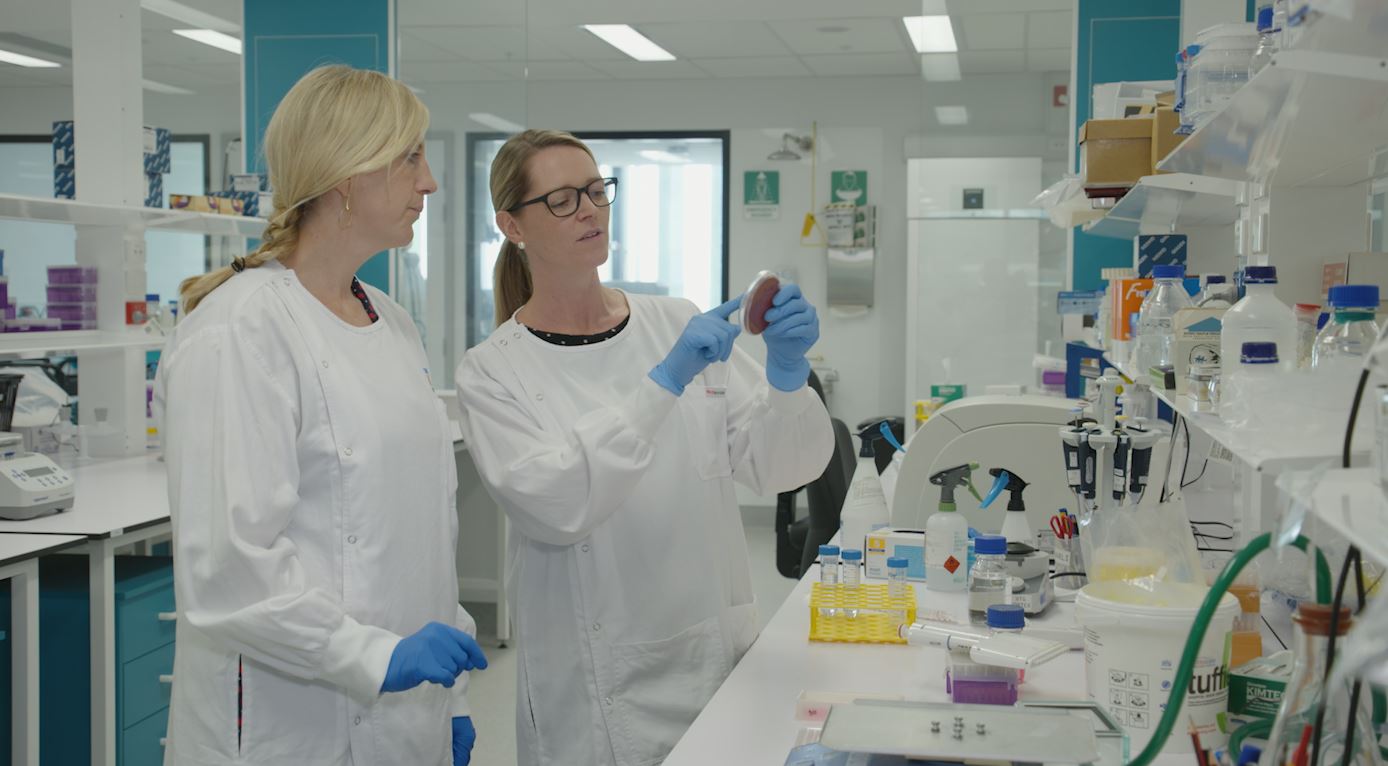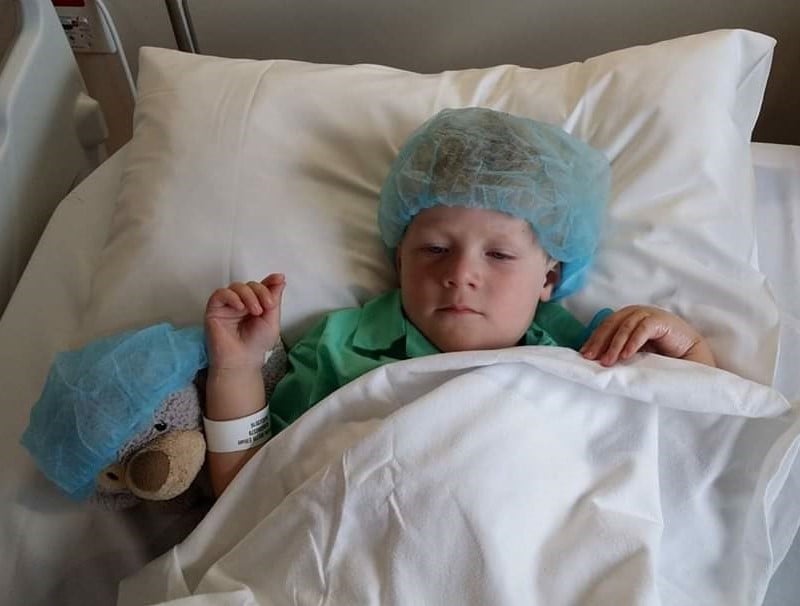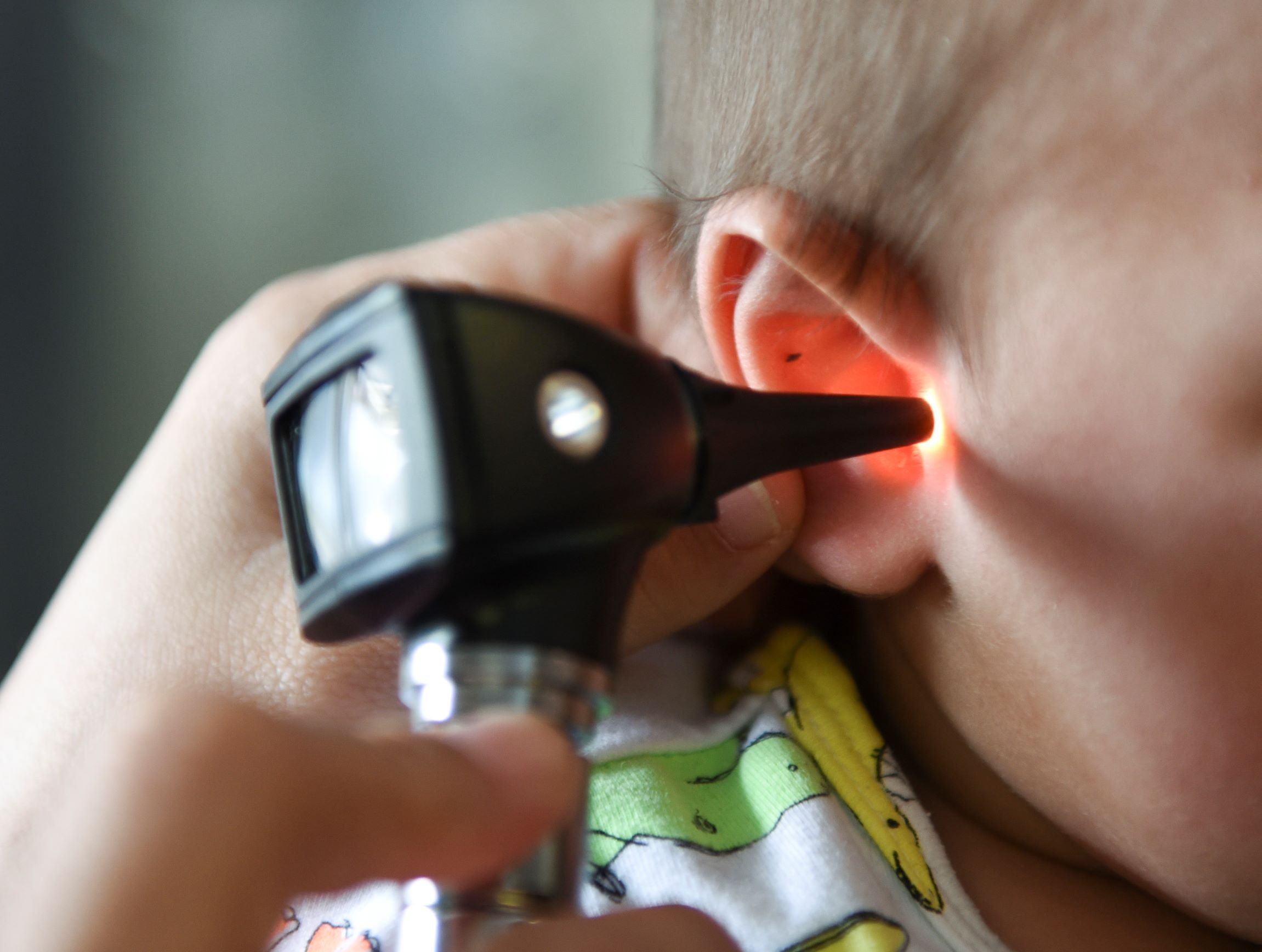
Wiping out childhood ear infections could become a reality thanks to new research identifying the main bacteria responsible for recurrent ear infections and repeat ear surgeries.
For Elliott Sanderson, the elimination of ear infections would be life-changing. A seasoned pro at grommet surgeries, Elliott (inset image) has had four sets inserted and up to 50 antibiotic prescriptions – all before his fourth birthday.

Elliott’s painful ear infections have led to never-ending trips to the GP, countless sleepless nights, and hearing loss. And he is not alone: researchers from the Wesfarmers Centre of Vaccine and Infectious Diseases (WCVID), based at The Kids Research Institute Australia, know he is just one of 650,000 Australian kids affected by ear infections every year.
Dr Lea-Ann Kirkham, Head of the Bacterial Respiratory Infectious Disease Group at WCVID, said the importance of reducing the burden of childhood ear infections could not be underestimated – they are the main reason children visit the GP and receive antibiotics, and a major reason why young Australian children have surgery.
“Our research shows that children with Haemophilus influenzae (NTHi) bacteria in their ear during grommet surgery are three times more likely to have recurring infections and require repeat ear surgeries to address their ear health issues,” Dr Kirkham said.
“This information has been pivotal in guiding our research strategies going forward – demonstrating how important it is to prevent the NTHi bacteria from growing and causing these nasty infections in the first place.
“In order to achieve this, we have developed a world-first nasal spray containing a ‘friendly’ species of bacteria from the nose. The spray is designed to work like a probiotic, preventing NTHi growth in the nose and guarding the ear from infection.”
Dr Kirkham said if the nasal spray proved successful in eliminating ear infections, children would no longer have to deal with the long-term consequences of recurring ear infections, such as sustained hearing loss.


ATOMIC Ears Study
The NTHi bacteria is notoriously difficult to treat once present in the ear, living in a sticky glue that helps the bacteria to survive and resist antibiotics.
Dr Kirkham’s research team is working with doctors at Perth Children’s Hospital to find out whether a medication (Dornase alfa) used to treat sticky lungs in cystic fibrosis patients could help reduce the number of children requiring repeat grommet surgery.
“We have shown that Dornase alfa can break down the sticky ear glue in the laboratory, allowing antibiotics to kill the NTHi bacteria hidden within,” Dr Kirkham said. “We have also proven it is safe to apply into the ears of children and are now gaining further evidence through the ATOMIC Ears Study.
“Children are receiving Dornase alfa ear drops during and after grommet surgery to see if this proves effective in destroying the NTHi bacteria and preventing the need for additional surgeries.”
Read more about the studyWhat's next?
- Dr Kirkham and her team will now upscale production of the nasal spray to allow for future clinical studies.
- Researchers also found that the nasal spray could also have the ability to suppress influenza infection. Further investigations will help learn more about its potential to protect against multiple species of respiratory bacteria and viruses.
